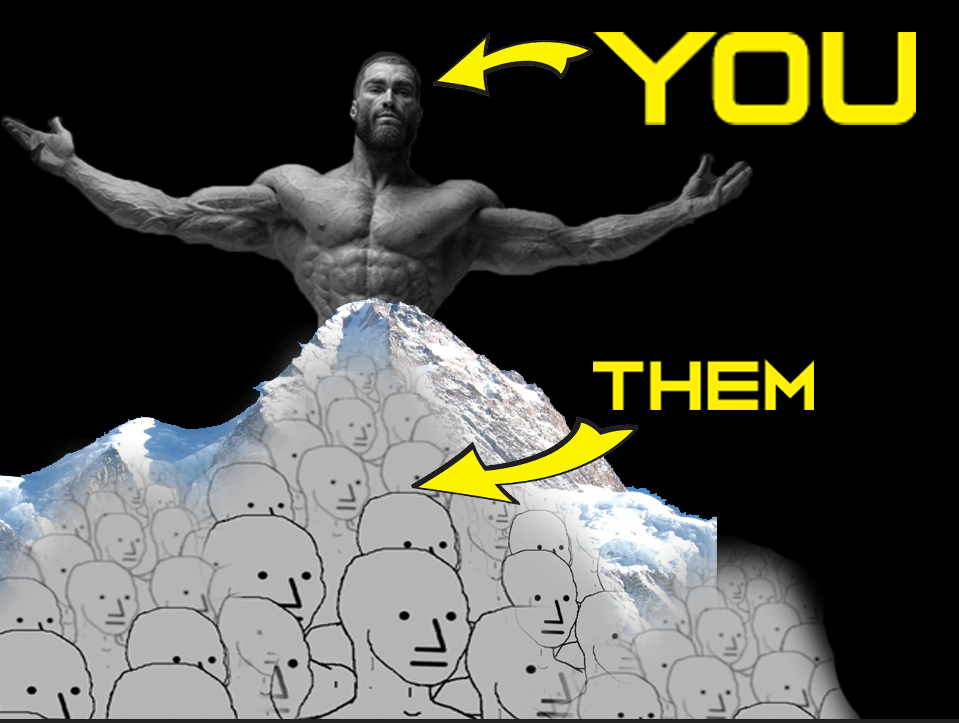Top 3 cutting mistakes… and solutions

Intro
When I talk to people trying to cut and lose fat at the gym, or read posts online about a person struggling to lose weight, I’ll ask them why and if they are tracking how much they’re eating. Very often they’ll say no but they’ve cut some bad food and are ‘trying to eat healthier’.
While this is certainly good, it’s simply not enough. You need to know exactly how many calories you are consuming in order to know whether or not you are eating in a deficit.
Another thing I see very often is that people say they’ve started a diet, only to talk to them again a month later to find out that they’ve quit.
Upon digging a little deeper, turns out they cut calories far too aggressively and rebounded hard which led big cravings and ultimately them to giving up.
The third most common mistake I see is that people still buy foods that make adhereing to a diet way more difficult than it needs to be.
I’ll cover these in more detail and provide solutions below.
1. Not tracking key metrics
Tracking key metrics is vital for a successful cutting phase.
By not tracking your calorie intake, activity and weight is like stumbling around in the dark trying to find a lost item without a torch.
Everything that goes into your mouth needs to be accounted for so that you can get an accurate assessment of just how much you are consuming.

Similarly, you need to be tracking your activity levels. A step counter is more than adequate to get a good measure on how much calories you are burning daily through activity.

Finally your weight need to be tracked. Ideally at the same time and conditions every day, then averaged out to get a more accurate weekly reading.
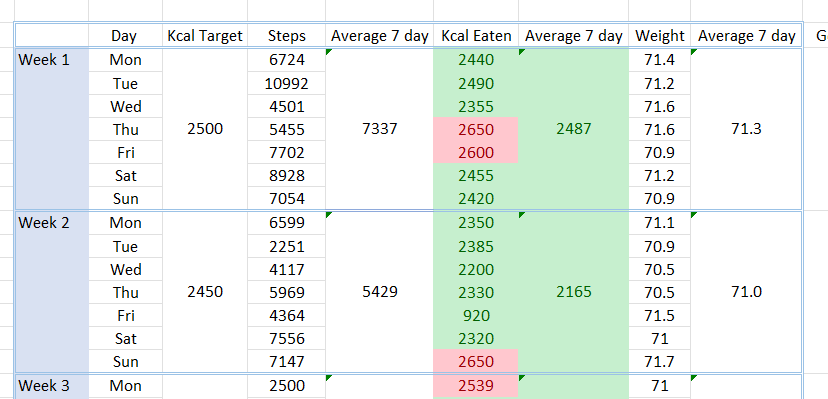
The best time to measure weight is in the morning after urination before eating or drinking anything.
Download this free tracker template below
2. Cutting calories too aggressively
Another mistake I see often is people come into a diet very enthusiastically – which is good, but they go too hard to quickly and burn out.
Being impatient and trying to do things too quickly can lead to severe food cravings.
It’s also very possible to ruin your metabolism by cutting calories too aggressively.
This will make it harder and harder to lose weight despite a large calorie deficit as your metabolism slows down to accomodate the large reductions.
This will result in drastic drops in energy, libido and you’ll even start unconsciously moving less in order to save energy.
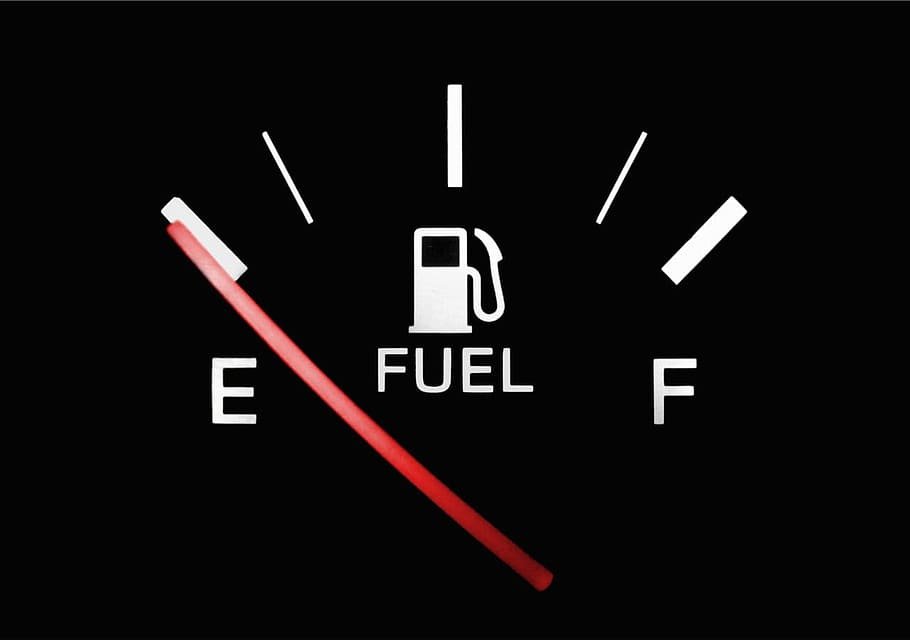
A much more sustainable approach is highly recommended, this will ensure that progress is sustainable and make achieving fat loss goals much more realistic.
3. Continuing to buy bad food

This one seems very obvious but I’ve seen it time and time again, people claim they want to lose weight yet they continue to buy shit food.
This causes multiple problems.
Imagine these two scenarios.
Scenario A: You bought junk food last time you went grocery shopping and leave it in your kitchen cabinet.
Scenario B: You didn’t buy the junk food, and the nearest shop is 15 minutes away.
It should be obvious which scenario is more conducive to a successful cutting phase.
Knowing you have snacks in the house will make it 10 times more likely you’ll give in to urges when you get food cravings.
By not buying them to begin with, when a craving comes. You know you’ll have to go through the ordeal of leaving your house and purposely going to buy junk food in order to cheat.
For most people this creates a big enough stop gap to allow the craving to pass and the more rational part of their mind to ‘catch up’ and come back into control.
Most people find that after a long enough time of resisting junk food, that they’ll stop craving it because they’ve forgotten what it tastes like anyway.
Check out my ultimate fat loss guide here
Overview & solutions
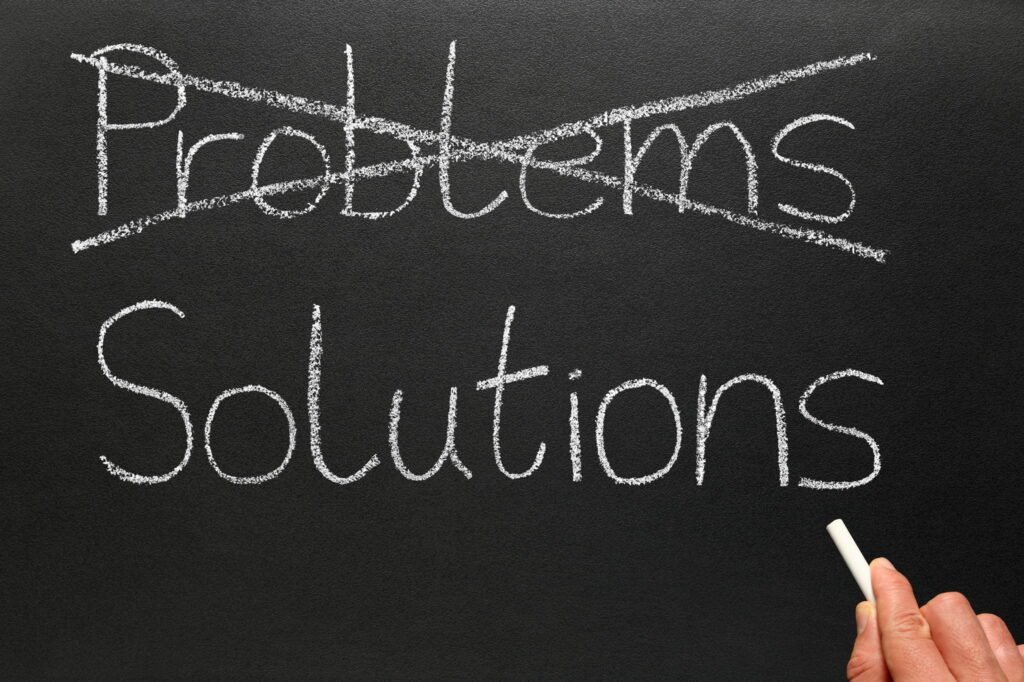
Tracking key metrics
Tracking your weight, calories and steps takes less than a few minutes.
Weight is done first thing in a morning.
Calories are totalled up at the end of the day after your last meal.
You can use an app for this or just the calculator function on your phone.
Steps are added before bed by checking your steps app or device.
Cutting slow and steady vs aggresively
Although it’s a good thing to be excited and motivated as you start cutting, being too aggressive with calorie restriction is not the optimal way to do it and you’ll quickly burn out.
To prevent yourself cutting calories too quickly. Calculate your maintenance using this calulator.
https://www.musclehacking.com/calorie-calculator
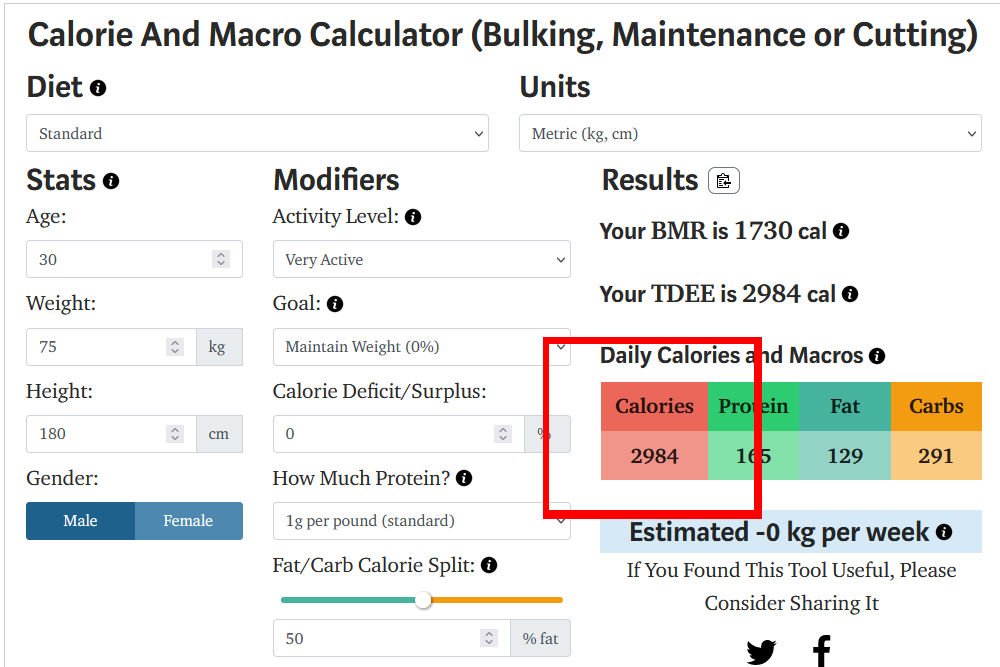
Once you’ve calculated how many calories you need to maintain your current weight, eat at that number for a week to confirm that it is in fact your maintanance.
If it is, subtract 300 calories to begin cutting.
Keep eating at this amount until your weight stalls for an entire week (For most people, this takes between 3-6 weeks).
This will mean that your new maintanance weight has dropped.
From here you can reduce calories again until your weight stalls once more.
Rinse and repeat.
Alternatively, you can reduce daily calories by 50kcal a week once the initial 300kcal reduction as stalled to sustain fat loss.
How to stop buying junk food when cutting
It’s easy to say ‘just stop buying shit food’
…but it’s much harder to actually do it.
Although it’s never going to be easy. There’s a few things that can help.
If you can, eat a bland meal before you go grocery shopping.
A bland meal will help to reduce intense cravings for sweet and/or salty foods by signalling to your stomach that it’s full.
If you were to shop starving hungry you’ll be much more inclined to take a wonder into the danger zone…
Aka. The sweet/chocolate aisle and pick up a pack of cookies or doritos.

Another tip is to be more conscious and make a shopping list.
Without making a list you’re given yourself room to deviate and go off-plan.
Make a pact with yourself that you’ll only buy what is on the list and then immediately leave.
These are all very easy to address, and can quite literally be make or break in making a cut successful or not.

